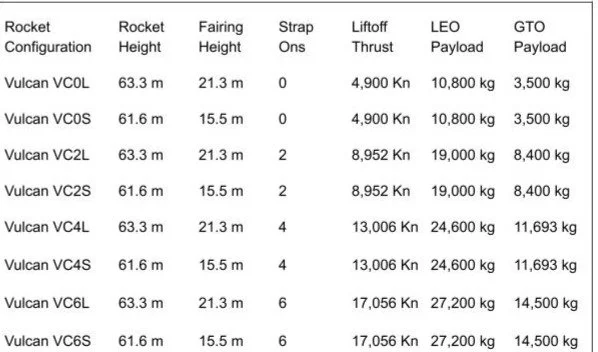Vulcan Certified
ULA’s New Vehicle to Begin National Security Flights
Ricky Whitmore
Space Writer
03/28/2025
United Launch Alliance’s Vulcan Centaur Rocket has officially been certified to fly national security payloads for the United States Government. Announced Wednesday by ULA and the US Space Force, this allows puts another rocket into the mix to compete with SpaceX for launches on behalf of the national security apparatus and puts ULA back in the mix for launches that they have been well known for over the years.
Vulcan flying Peregrine Mission One (Cert 1). Photo Credit: United Launch Alliance.
The Vulcan Centaur is ULA’s newest rocket, which combines the capabilities of the now retired Delta IV and the Atlas V, which is being phased out. Vulcan flew for the first time in January of 2024, and again in October 2024. These 2 flights were among the final requirements for the certification process by the US government, certifying that a rocket can carry national security payloads. The large gap between these 2 certification flights was due to delays with the Dream Chaser space plane, which was set to be Vulcan’s second payload. After waiting for months, ULA finally made the decision to fly the second certification mission with a dummy payload aboard, designed to simulate a real satellite. The first certification flight went off without a hitch, at least on the rocket’s end. The lunar lander it was carrying was unable to make it to the moon, through no fault of Vulcan’s. The second flight however had a bit of a hiccup. During ascent one of the solid rocket boosters experienced a small explosion. This initially forced the rocket to veer to one side, however, impressively, Vulcan’s BE-4 main engines were able to correct the trajectory, and the vehicle was still able to hit its exact target orbit. Though the SRB anomaly caused some delay in the certification process, the mission was nonetheless deemed a success, and the rocket was certified.
Vulcan flying Certification Flight 2. Photo Credit: United Launch Alliance.
The Vulcan Centaur is a 2-stage rocket which was designed heavily around being able to fly national security payloads, though it is more than capable of flying other payloads, having already been booked to fly numerous missions for Amazon’s Project Kuiper constellation. The rocket has 8 different configurations that have different designations for the number of strap on solid rocket boosters, and the length of the fairing. There is a standard-length fairing, measuring 15.5 meters (50.8 feet), and a long fairing measuring 21.3 meters (69.9 feet). Both fairings measure 5.4 meters (17.7 feet) in diameter. Vulcan can be set with either 0, 2, 4, or 6 solid rocket boosters. So, for example, the Vulcan VC2S, which flew both certification missions, has 2 SRBs, and a standard fairing. Vulcan VC4L would have 4 SRBs and a long fairing. This variety in configurations allows Vulcan to be customized to fit exact payload needs, something that the Atlas V was also famous for. The 1st stage of the Vulcan Centaur is powered by 2 BE-4 engines, made by Blue Origin. The 2nd stage is, as you may expect, ULA’s tried and true Centaur upper stage, powered by 2 RL-10 engines. The SRBs used to power the rocket’s initial flight are GEM63XLs an upgraded version of Northrop Grumman’s Gem63 SRBs. Vulcan has a maximum payload capacity of 27,200 kilograms (30 tons) to low earth orbit, and 14,500 kilograms (16 tons) to geostationary transfer orbit when in its most powerful configuration, the VC6. The full payload capacities can be seen in the table below.
Breakdown of the Vulcan Centaur Rocket. Photo Credit: United Launch Alliance.
Vulcan now becomes the 3rd rocket certified to fly national security payloads, joining SpaceX’s Falcon 9 and Falcon Heavy vehicles. Technically the Atlas V is still certified, but all remaining flights of Atlas are dedicated to Project Kuiper, ViaSat, and the Boeing Starliner Capsule. There are a few other rockets that are looking to be certified in the next few years as well, including Blue Origin’s New Glen, Rocket Lab’s Neutron, Firefly’s MLV and Relativity’s Terran R. Vulcan’s first national security mission is set to launch no earlier than June 2025.
Long delayed, and often mocked, it was good to see Vulcan get off the ground last year. I am a firm believer that ULA still very much has, and very much deserves a seat at the table, and Vulcan is a great way to accomplish that feat. Now that the cert flights are done, and it can start flying contracted missions I presume that launch cadence will start to ramp up. More capable than Atlas V and significantly cheaper than Delta IV I believe Vulcan Centaur will be flying for many years to come, much to the chagrin of the haters. Now if only Dream Chaser would hurry up…
As always feel free to write to me at rickyew2112@gmail.com, or find me on X @Rickyew2112
Sic Itur Ad Astra
(Thus They Journey to the Stars)



